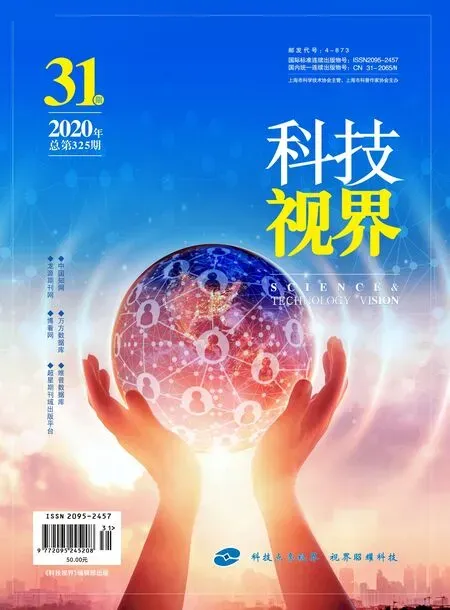Conversion of Parts of Speech in English-Chinese Translation
2014-08-15李冰
李 冰
(鹤壁职业技术学院,河南 鹤壁 458000)
0 Introduction
Translation is a language activity,which involves two languages and a variety of knowledge.It is the ideological content,feelings and style of a language expressed and reproduced by another language.There are many differences between two different languages,such as vocabulary,grammar structure and so on.Words can be classified as follows:nouns,verbs,adjectives,adverbs,pronouns,prepositions,conjunctions,etc.According to this,parts of speech are the core content of the traditional grammar.Different languages have different standards to distinguish part of speech.Nouns,verbs,adjectives,adverbs have complex systems of endings and vowel changes or both.When we translate between these languages,we commonly use conversion of parts of speech to make the translation more standard and idiomatic.
1 Chapter Two Translation and Conversion of Parts of Speech
1.1 About the Translation and Conversion of Parts of Speech
It is not so easy to define translation as a skill or a state,a science or an art.It is understood as a linguistic phenomenon,as an operation performed on language.This operation is seen as a process of translating between source language and target language.Unfortunately,languages are not so simple,and difficulties may also arise when there are no equivalent parts of speech.Each language has its own special structure.Word-for-word correspondences do not exist in the process of translation.The reasons are as follows:
1)Many words have more than one meaning;
2)Many words are culture-bound and have no direct equivalents;
3)Cultural orientations can render a direct translation nonsensical;
4)A cultural may not have the background and understanding to translate experiences specific to other cultures.
1.2 Four Kinds of Adjustments
“Translation aims primarily at reproducing the massage.To do anything else is essentially false to one’s task as a translator”(Nida,Charles 198).But to reproduce the massage,one must make a good many adjustments as accuracy and economy.There are four kinds of adjustments:1)Semantic Adjustment;2)Word-order Adjustment;3)Grammatical Adjustment;4)Literary-style Adjustment.As a translation method the transformation of parts of speech is fit for all styles.
2 Methods of Conversion of Parts of Speech
“English and Chinese do not belong to the same language family”(Tytler 153).They have different grammars and expressions.In the practical translation work,words in the original,if necessary,which may be translated into identical in the meaning but different in the parts of speech.Therefore,conversion is one of the most important translation techniques in English-Chinese translation.Generally speaking,there are the following methods.
2.1 Conversion into Verbs
In comparison,Chinese is a language in which verbs are more widely used than those in English;while in English nouns are more frequently used and occupy a dominant position,then we have to transform some English nouns into Chinese verbs in our practical translation,and usually:English nouns,adjectives,adverbs and prepositions transformed into Chinese verbs.
2.2 Conversion into Chinese nouns
Although nouns are more frequently used in English than verbs,sometimes we can translate English verbs into Chinese nouns,which is necessary in the process of English-Chinese translaion,and is more accordance with Chinese custom.Such as:
1)English Verbs Transformed into Chinese Nouns;2)English Adjectives and Adverbs Transformed into Chinese Nouns.
2.3 Conversion into Adjective
English nouns contain a much wider meaning and are more frequently used than Chinese nouns.Some abstract nouns are closely related to their corresponding adjectives in meaning.In order to make our translation read more natural and conformable to the expression habits of the Chinese language.We can transform nouns into Chinese adjectives.And the common modifiers of English verbs are adverbs which are often transformed into Chinese adjectives.
2.4 Conversion into Adverbs
The adjectives usually modify the nouns in English,so when English nouns are transformed into Chinese verbs,the English adjective are often transformed into Chinese adverbs.Sometimes we often transform English nouns into Chinese adverbs in order to make the version correspond to Chinese usual practices.We usually conserve English nouns into Chinese verbs in order to make the translation more idiomatic.
3 Problems and Countermeasures Concerned in Conversion of Parts of Speech
The way of thinking and expressing is quite different between Chinese native speaker and their English counterpart.Thus conversion is necessary for translating from English to Chinese or vice versa.There are some problems about transformation that we should pay much attention to the method carefully.
3.1 Avoidance of Direct Conversion
Influenced by the native tongue,Chinese learners often use the meaning of words to make the translation regardless of parts of speech.
3.2 Avoidance of The Native Tongue Expression
Each tongue has its characteristics in linguistic expression as well as lexical structure.Words in Chinese have no conjugation at all.English words often have affixes,word patterns,but Chinese are not good at word-form variation.They often use the way of Chinese practices to express the English sentence.
There are some countermeasures to solve the above problem.Firstly,when learners study new words,they should know parts of speech of the words and remember some makers;secondly,learn the sentence structure to understand different parts of speech have different positions.Thirdly,combine conversion of parts of speech and conversion of clauses to reduce the influence of the native tongue effectively.
4 Conclusion
This article is trying to summarizing and explaining the skill used in translation.Correctly using of parts of speech conversion can make the translated version smoother and clearer.This thesis is trying to studing the importance of the conversion of parts of speech and problems concerning using this method and some countermeasures.There are four basic ways to converse parts of speech can be used by translators in the process of translation.In addition,we take some problems concerned in making conversion between parts of speech and give some suggestions.It is demonstrated that we can have a good master of conversion and improve the translation.We deserve to study the ways as long as they are based on the faithfulness,expressiveness and elegance and of benefit to translation.
[1]T.Tytler.Essay on the Principles of translation[M].Beijing:Foreign language teaching and Research Press,2007.
[2]Christina,Schaffner.Translation and Norms[M].Beijing:Foreign Language Teaching and Research Press.2007.
[3]路定安.英汉比较与翻译[M].北京:中国对外翻译出版社,2003.
[4]张培基.英汉翻译教程[M].上海:上海外语教育出版社,2007.
